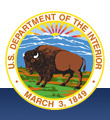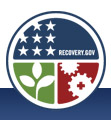National Geospatial Program: Elevation and Orthoimagery Data
Need
Digital Orthoimage – Niagara Falls The National Map is a collaborative effort among the USGS and other Federal, State, and local partners to improve and deliver geographic information for the Nation. The electronically-based National Map can provide land cover information about agriculture and forests; supply elevation data for flood mapping and emergency operations; furnish hydrographic data that can be used in irrigation, in water use and water quality studies, by fishermen and boaters. All this geospatial data can be used by any individual or organization to aid commerce, to inform citizens, to promote scientific insight, and to help us respond to the vital natural resource and environmental issues of our Nation.
Recovery Act Funding
ARRA funding will provide USGS with $14.6 million to acquire high resolution elevation data for coastal watersheds, major river floodplains and urban areas and high resolution orthoimagery data.
Benefits
Much like the 1950s-era Interstate Highway System built a transportation infrastructure, an investment in a robust, national geospatial infrastructure in 2009 will make an immediate contribution to putting America back to work. It will pay dividends for decades to come in the form of better, more informed decision making in issues of natural resource management; public safety; human and environmental health; disaster response and mitigation; business development, commerce, and conventional and alternative energy development.
The National Elevation Dataset (NED), one of eight base layers of The National Map, provides basic elevation information for earth science studies and mapping applications for the United States. Lidar (light detection and ranging) technology allows the creation of contours down to increments as low as 1-foot with great accuracy and precision, permitting more accurate mapping of flood zones and inundation areas. The addition of highly accurate elevation data acquired with lidar will greatly improve the NED, both in the enhanced quality of the data and in the range of science and data applications that it will enable.
Applications for precision lidar data include:
- 3D visualization
- High-accuracy land cover classification
- Modeling for hazardous spills
- Wildland fire behavior
- Soil erosion
- Climate data analysis
- Vegetation height estimation
- Cell phone tower placements
- Modeling (computer simulation) of landforms, habitat, vegetation, hydrology
Digital orthoimagery is an additional component of a comprehensive geospatial infrastructure for the U.S. Recovery Act funding presents a key opportunity for the USGS to upgrade existing and collect higher resolution orthoimagery data in critical areas of the nation.
The investment of ARRA funding in digital elevation and orthoimagery data will improve common understanding of the geographic dimensions of our nation. Improved geographic understanding enables smarter decisions in both government and industry about critical issues involving energy, natural resources, and climate change. Free and open access to accurate geospatial data will encourage new developments in natural science and in commerce. Open access to comprehensive geospatial data will empower people; it will enrich our economy.
Further information








